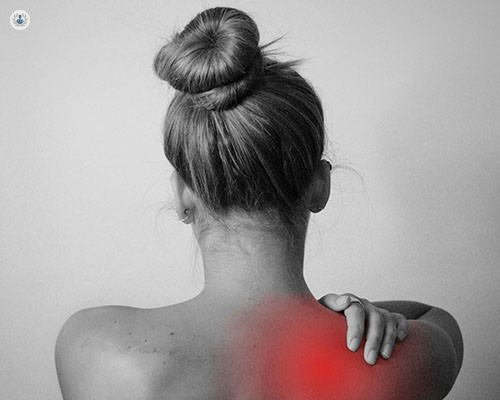What is polymyalgia rheumatica? Everything you need to know
Written in association with:In this article, highly esteemed consultant rheumatologist, Dr Kirsten Mackay, details what polymyalgia rheumatica is, whilst also outlining the associated symptoms, causes, and treatment options.

What is polymyalgia rheumatica?
Polymyalgia rheumatica (PMR) is an inflammatory disorder that primarily affects older adults, typically those over the age of 65, but it can occur occasionally in those aged 50.
It is characterised by muscle pain and stiffness, particularly in both shoulders, upper back and neck, and hips/ buttocks/thighs.
These symptoms can significantly impact daily activities and overall quality of life.
Symptoms
The most common symptoms of PMR include bilateral shoulder pain, morning stiffness usually lasting more than 30 minutes, and significant fatigue. Patients may also experience systemic symptoms such as low-grade fever, weight loss, and a general feeling of malaise. The pain usually worsens with rest and improves with movement, which can be confusing for those unfamiliar with the condition.
Diagnosis
Diagnosing PMR can be challenging due to its similarity to other conditions like rheumatoid arthritis or fibromyalgia. A thorough medical history and physical examination are essential.
Blood tests measuring inflammation markers, such as erythrocyte sedimentation rate (ESR) and C-reactive protein (CRP), are commonly used to support the diagnosis. Imaging studies may also be employed to rule out other causes of joint pain.
Causes and risk factors
The exact cause of PMR remains unclear, but it is believed to involve an autoimmune response where the body’s immune system mistakenly attacks its own tissues. Genetic factors play a role; individuals of Northern European descent are at higher risk. Additionally, there is a notable association between PMR and giant cell arteritis, another inflammatory condition affecting blood vessels.
Treatment options
The primary treatment for PMR involves corticosteroids, which effectively reduce inflammation and alleviate symptoms. Most patients experience significant relief within a few days of starting treatment. Doctors typically begin with a moderate dose and gradually taper off treatment over about 12 months as symptoms improve. Physical therapy and stretching exercises are also beneficial in maintaining mobility and strength.
Living with PMR
Managing PMR requires ongoing communication with healthcare providers to monitor symptoms and adjust treatment plans as necessary. Adopting a healthy lifestyle that includes regular exercise, a balanced diet, and stress management techniques can enhance overall well-being.
If you are experiencing the symptoms of polymyalgia rheumatica, and would like to book an appointment with Dr Kirsten Mackay, visit her Top Doctors profile.


